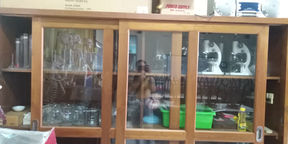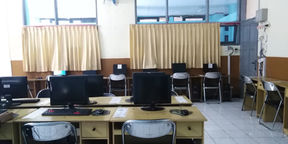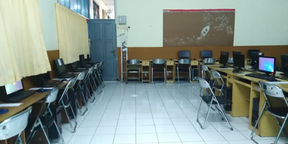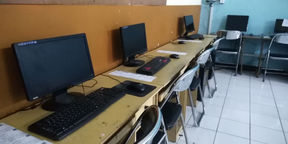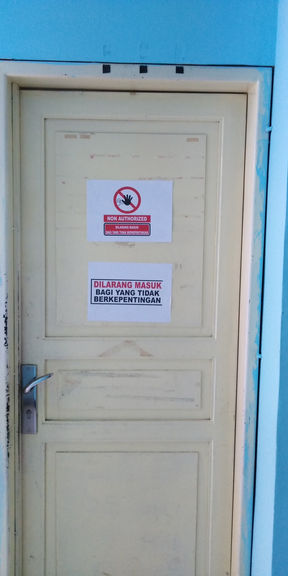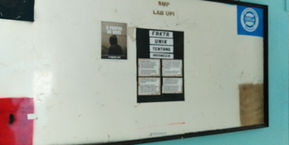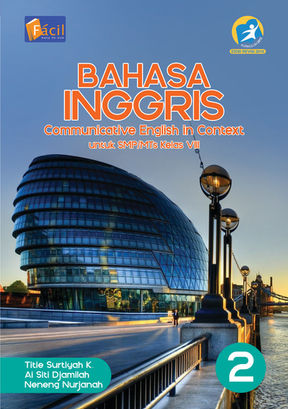



Overview
I was assigned at SEKOLAH MENENGHA PERTAMA-SEKOLAH LABORATORIUM PERTAMA or also know as "SMP laboratorium Percontohan Universitas Pendidikan Indonesia and is located at Setiabudhi, Bandung Indonesia, West Java. One of the prestige school for middle school. It is a public school.
A Short History of this school started last August 4, 2003 which is an important event in the journey of Universitas Pendidikan Indonesia, that was to hand over KORPRI Middle School and High School from the KORPRI Welfare Foundation to the UPI Chancellor. This event marked the re-realization of an old idea, namely the presence of a laboratory school in the midst of a college which one of its activities has been pursuing education and teacher science. The idea of the presence of a laboratory school together with the birth of the PTPG was formed which later became FKIP A and B, which in 1961 turned into IKIP, and in the end became UPI.
An institution formed by FKIP, namely the Curriculum Development Institution (LPC), in 1960 founded the Kindergarten and then followed in 1964 also established the Elementary School both of which were Laboratory Schools. With the intention that the Labschool has all levels of education, then in 1969 a junior high school was established and the following year a high school was established.
This short history of the school gathered and given by the Vice Principal at SMP Labschool in the person of Mr. DWI HARYANTO.
School's Vision, Mission and Goals
The school's mission is to make the institution sustain cleanliness of environment, teach individuals the sense of responsibilities and live out their religious beliefs and faith. Also, to enhance every students capabilities and skills. One of the school's goal is to help students grow independently and disciplined individuals. On the other hand its vision is to form an individual with character, excellent and environmental advocates.
Mission
1. Develop a school environment that is healthy, neat, clean, safe and comfortable.
2. Growing discipline, a sense of family and religious enthusiasm for all school members.
3. Developing management of school management that is effective, efficient, democratic in good governance and accountable.
4. Develop effective learning that is active, creative, efficient and fun.
5. Optimizing the teaching and learning process and guidance to students.
6. Increasing students' academic and non academic achievements in accordance with the development of science and technology and the demands of the community.
7. Developing culture: likes to read, likes to memorize, curiosity, tolerance, cooperation, mutual respect, honesty, hard work, creative and independent.
8. Fostering the independence of students through habituation, entrepreneurship and planned and sustainable self-development.
9. Prepare graduates who are competitive, reliable, resilient and responsive nationally and internationally.
Vision
-
The realization of schools that excel in achievement, character and environmentally friendly
Note:
Taken from Pak Dadan Ramdani,
Pendamping Kurikulum, SMP Labschool
School Facilities and Learning Resources
In Smp Labschool, the learning resources and facilities were advanced in technology like the remote control electricfan, projector, speakers and what i like the most is the use of cellphone when having a quiz through the andoid studio wherein the teacher will monitor the students performance easily and to assess whether the quiz item should have to be retained or reject. They also have the science laboratory for experiment, a library where the students and teachers will focus studying and as a resources to gather data and information to researches. At the school's corridor, you will see different posters and bulletin boards as a reminder for students and also to sustain the shared mission, vision and goals of the school. Aside from technologies, they also have books from the government and own published book named "Grafindo Book".

School's Curriculum
The curriculum use is the national curriculum and the local contents specified by the school. In the curriculum there is also provided the co-curricular activities in several subjects namely Mathematics, English, Japanese, Al-quoran reading and writing to improve teaching mastery.
Pedagogical Contents
Teaching Methods in SMP Labschool are the following:
-
Scientific Method
-
Active Learning
-
Language Learning-Genre Based Approach, Task Approach etc.
-
Learning Innovation
Learning Innovations
UPI Labschool Middle School innovates by applying dual language learning system , tauhiid class (religious class), habituation of student character or students must love mosque and collaboration between teachers and lecturers.
School's Evaluation and Measurement
In SMP Labschool, they uses four kinds of assessment, namely : Authentic, Written, Project and Portfolio Assessment. In authentic assessment , it aims to describe students skills, attitudes and knowledge of the students on how and what they have learned and how to apply these learnings into reality. To effectively meet the standard of this kind of assessment, examples are checklist, anecdotal, rating scale or memory approach. Project assessment or project appraisal is a tasks that the students must need to complete by period of time which they are expected to end with a product and the final product must be assess in order to improve their abilities and skills.These assessment focuses on planning, work and product of a project. Third is the portfolio assessment wherein the teacher must give several activities and works such as making of poems, letters, essays, compilation or documentations like photos, research reports etc. Lastly, they also use written assessment which consists of questions connected to the topic such multiple choice type of test, matching type, and causation. These kind of assessment that i have observed and learned in SMP Labschool, Bandung Indonesia is a great contribution on my field as a future teacher.

